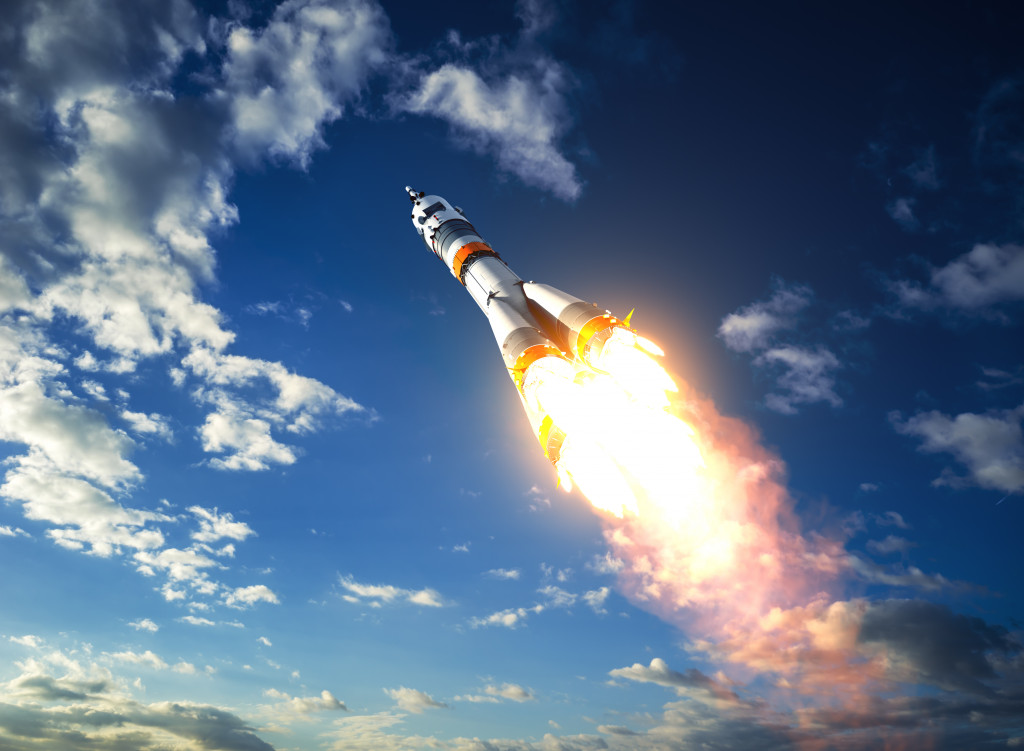The aerospace industry has indeed come a long way in terms of technological advancements. We’ve seen the use of digital tools and technologies such as the Internet of Things (IoT), 5G technology, big data and artificial intelligence, additive manufacturing, advanced satellites, as well as aircraft and spacecraft.
These digital tools and technologies have contributed to significant improvements in various aspects of aerospace and aviation. Think of global communications, weather forecasting, global positioning system (GPS) navigation, air travel, and space exploration. It’s safe to say that humans have come a long way in terms of progress and development.
Let’s take a look at some of the technological trends in space travel. Keep on reading to learn more.
1. The rise of small satellites
When it comes to technological trends in space travel, the rise of small satellites tops the list. Gone were the days when these artificial satellites were bulky and heavy in terms of weight and size. In recent years, more and more miniaturized satellites get launched into outer space. A few examples are Space Inventor released by a Danish startup, and EnduroSat invented by a Bulgarian company. These small satellites are best suited for wireless communication, scientific observation, and Earth monitoring.
2. Robust space communications
Global communications are paramount to the world. In the past, space communications heavily relied on a transmitter and receiver. They worked by sending messages via electromagnetic waves from the transmitter to the receiver. Today, the aerospace industry uses advanced antennae, low-earth orbit (LEO) satellites, and ground stations for robust communications. A few examples of these advanced technologies are the Thorium Space Technology and Arctic Space Technologies.
3. Space traffic management

Aside from space communications, space traffic management is essential. Think of various vehicles running on roads that require transportation management. Such traffic management applies to outer space as well. Why? The majority of the LEO satellites are now space junks. Consider the rocket thrusters, derelict satellites, and all the debris brought on by space collisions and explosions. Hence, space traffic management is crucial, as space junks become a menace to space travel.
4. Advancement in space manufacturing
Space manufacturing is a part of the aviation and aerospace industries. However, these sectors need robust materials and advanced processing for quality mass production. Think of space structures, aviation vehicles, aerospace shuttles, and satellites. That is where digital and technological solutions come into the picture. Some of these technological trends in space manufacturing include automation, robotics, and 3-D printing. They have greatly assisted in the production of space-related products, structures, and assets.
5. The need for Smart propulsion
When it comes to satellite constellations, Smart propulsion is a vital part of the overall equation. Why? There’s a need to observe sustainability in space missions and exploration. It’s good that various companies in the aerospace industry have come up with Smart solutions. These include electric, green, and water-based propulsion. Let’s take, for instance, the P-SRAM products for aerospace applications. They help combat the harsh operating conditions of the space radiation environment.
6. The use and protection of space data
It’s no secret that we now live in a data-driven world. Yes, data and information drive most human actions and interactions. Big data with the help of automation and AI applies to the aerospace industry as well. Space data is essential for global communication, imaging applications, planet monitoring, and even aerospace defense. As such, there’s a need to protect this data and information.
7. The continuous space mission and exploration
Of course, we can’t discuss the aerospace sector without mentioning space missions and exploration. It is humankind’s greatest ambition to explore outer space and discover life outside of Earth. In recent years, we’ve been sending spacecraft to outer space to start exploring things in our solar system. While we’ve sent spacecraft to Mars, humans have only set foot on our planet’s sole moon. Hence, space exploration will continue in the years to come as we look for other life forms and seek to understand our universe.
Going beyond planet Earth
It’s safe to say that our planet has become a global village. Through the aviation and aerospace sectors, we’ve made global interactions plausible. The technological trends can attest to how far we’ve gone in terms of progress and development.
But humans are posed with a challenge to travel outside of our planet and explore the unknown. The aerospace sector is yet to continue developing technologies to make space travel and exploration more plausible, seamless, and robust. Soon enough, humankind will go further beyond the planet Earth and conquer outer space.

